A slew of books are being published in connection with the 50th anniversary of the Apollo 11 Moon landing. This roundup introduces you to 16 of them, which collectively provide excellent summaries of the events of the Moon landing and the space race leading up to it, some spectacular photographs, and thoughtful reflections about what it all has meant.
Jump to Histories, Lessons Learned, Graphic Novel, or Books for Young Readers.
Coffee-table Books
FIRST ON THE MOON: The Apollo 11 50th Anniversary Experience. Rod Pyle, with a foreword by Buzz Aldrin. 194 pp. Sterling, 2019. $29.95.

This coffee-table book has approximately 200 photographs; most are striking and many are in vivid color. Pyle’s narrative explores the origins of spaceflight, the selection of the astronauts, the Mercury and Gemini programs, the development of the Lunar Module, the first landing on and exploration of the Moon, and reentry and recovery on Earth.
PICTURING APOLLO 11: Rare Views and Undiscovered Moments. J. L. Pickering and John Bisney. 264 pp. University Press of Florida, 2019. $45.

This is another lavishly illustrated coffee-table book, but the authors’ goal was to include as many previously unpublished images as possible, so there is not much overlap with the photographs in First on the Moon (aforementioned). The book’s focus is on what happened from January through August 1969: crew training, geology field trips, lunar surface simulations, assembly of the Saturn V booster and the two Apollo spacecraft at the launch site, launch preparations, launch vehicle rollout, and testing, a dress rehearsal in lunar orbit for the first lunar landing, the landing itself, the astronauts’ recovery and quarantine, and subsequent parades, tours, anniversaries and crew reunions. Roughly half of the excellent photographs are in color.
THE SPACE-AGE PRESIDENCY OF JOHN F. KENNEDY: A Rare Photographic History. John N. Bisney and J. L. Pickering, with a foreword by Christopher C. Kraft, Jr. 205 pp. University of New Mexico Press, 2019. $45.
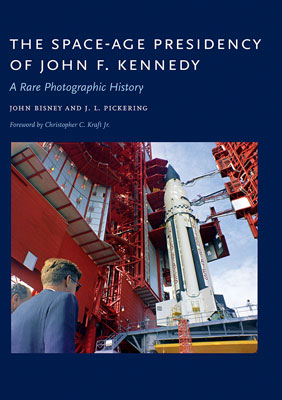
Bisney (a journalist) and Pickering (a space-flight historian) have published a whole series of books featuring rare space images. This book contains more than 500 rarely seen or previously unpublished photographs that document the space mission from 1961 through November 21, 1963, through Kennedy’s eyes.
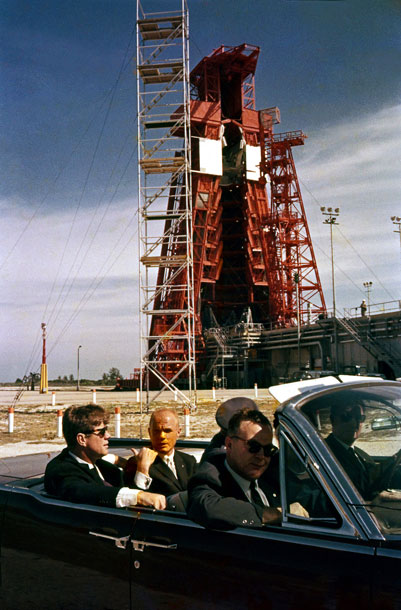
From The Space-Age Presidency of John F. Kennedy.
There are many photographs of Kennedy visiting Cape Canaveral and NASA’s space centers in Huntsville, Alabama, (where he was briefed by Wernher von Braun), and Houston, Texas. Kennedy is also shown talking on the phone with astronauts who have just completed their missions, honoring astronauts at the White House, and giving out NASA Outstanding Leadership medals in the Rose Garden. Also included are photographs taken the day before Kennedy was assassinated, when he visited Brooks Air Force Base in Texas, home of the Aerospace Medical Division, to give a speech at the dedication of the Aerospace Medical Health Center.
SUN AND MOON: A Story of Astronomy, Photography and Cartography. Mark Holborn. 373 pp. Phaidon, 2019.

This gigantic book—which devotes more than half of its pages to high-quality, full-page color photographs—begins with Neolithic stone carvings of lunar patterns that have astronomical associations, and it ends with an image from the Sloan Digital Sky Survey. Chapter V, “Man in Space,” pages 258–303, has 32 full-page color photos, some of which spill over onto a facing page. It covers the Apollo enterprise from its beginnings in 1961 through the Apollo 11 mission and includes a few images from Apollo 14, 15, 16, and 17. The chapter closes with brief mentions of Pioneer 10, Pioneer 11, Voyager 1, and Voyager 2.
Back to Top
AMERICAN MOONSHOT: John F. Kennedy and the Great Space Race. Douglas Brinkley. 548 pp. Harper, 2019. $30.

Kennedy is at the center of the story told here, and Brinkley considers the book a contribution to U.S. presidential history rather than to space studies. But he describes the factors that fueled the birth and development of NASA and of the Mercury, Gemini, and Apollo projects. The cast of characters includes Wernher von Braun, John Glenn, and Lyndon Johnson. The preface discusses the significance of Kennedy’s 1961 pledge to put a man on the Moon in less than 10 years. Early chapters then provide some history of rocketry and discuss the experiences of Kennedy and von Braun during and after World War II. Chapters follow on the space race, Sputnik, the creation of NASA, Kennedy’s support as a senator for increasing NASA funding, the Mercury Seven astronauts, Kennedy’s campaign for the presidency, and his decision to make James Webb the NASA administrator. Only three months into Kennedy’s presidency, Yuri Gagarin became the first human to journey to outer space, and it became politically imperative for the United States to do something to demonstrate its technological superiority over the Soviets and to achieve global prestige. So Kennedy made putting a human on the Moon a national priority. Brinkley’s detailed account of all that went on behind the scenes as Kennedy and Webb moved toward that goal makes interesting reading. The book includes 16 pages of color plates and a number of black-and-white photos.
ONE GIANT LEAP: The Impossible Mission That Flew Us to the Moon. Charles Fishman. 464 pp. Simon and Schuster, 2019. $28.

After President Kennedy announced that the United States would land a man on the Moon by 1970, NASA engineers had to figure out how to navigate to the Moon, how to build a rocket big enough to fly there, how to build a computer small enough to put on the rocket, how to feed astronauts in space, and a host of other matters; 400,000 people worked to make the Moon landings possible. Fishman provides a detailed behind-the-scenes account of their work, devoting a lot of space to the development of Apollo’s “fourth crew member”—the Apollo flight computer and its guidance and navigation systems—and the men and women at the Massachusetts Institute of Technology and NASA who solved the challenges posed, many of whom had previously worked on Polaris missile guidance and MIT’s Mars probe project. The roles of key figures such as MIT professor Charles Stark (“Doc”) Draper and NASA engineer Bill Tindall are portrayed in depth.
THE APOLLO CHRONICLES: Engineering America’s First Moon Missions. Brandon R. Brown. 269 pp. Oxford University Press, 2019. $29.95.
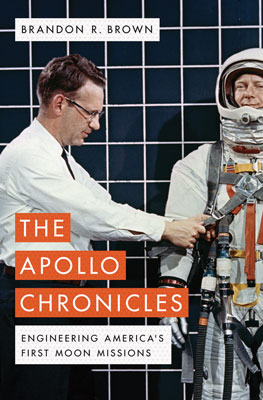
The author, a physics professor at the University of San Francisco, is the son of an Apollo engineer. He interviewed his father and a number of other engineers and scientists in his effort to find out what it was like to be one of “the four hundred thousand minds that pioneered the missions.” Brown shows the engineers meeting tough deadlines and performing technical miracles, drawing schematics around the clock, making mistakes, coping with warning lights that blinked at the worst possible time, and regrouping after the tragic death of three astronauts in a fire that broke out in the capsule during a simulated countdown early in 1967. The first three chapters of the book provide background on conceptualization and rocket work from 1945 to 1961; chapters 4 through 13 cover the Moon missions through Apollo 17; and the final three chapters wrap things up.
APOLLO’S LEGACY: Perspectives on the Moon Landings. Roger D. Launius. 264 pp. Smithsonian Books, 2019. $27.95.
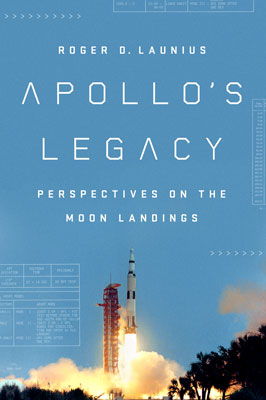
Launius was chief historian of NASA from 1990 to 2002. Here he considers various ways of looking at the six manned Moon landings that took place between 1969 and 1972. Were they the epitome of American technological know-how, to be revered because they show how successful Americans can be if they try? Would the massive funds expended have been better spent solving social problems or paying for national security initiatives? Was the program an abuse of Federal power? Were the Moon landings a source of key scientific advances, or did they stifle research on more important topics? What has been the long-term significance of the Apollo program? As Launius analyzes critiques of the Moon landings and discusses Moon-landing denialism, he uses key moments in the space race to illustrate his analysis.

From Apollo’s Legacy.
In the book’s final chapter, he notes that recollections of the Apollo program are marked by a nationalism and exceptionalism that border on jingoism, and he characterizes our memory of Apollo as a myth. He notes that pride at home and prestige abroad were important rationales for the undertaking, which became a metaphor for national inspiration. And he discusses advocacy by subsequent presidents for a return to the Moon, concluding that such a return will not happen anytime soon.
HEROES OF THE SPACE AGE: Incredible Stories of the Famous and Forgotten Men and Women Who Took Humanity to the Stars. Rod Pyle. Prometheus Books, 2019. Paperback, $18; e-book, $11.99.

Pyle profiles the pilots, scientists, and engineers who worked on the American and Russian space missions, including some of the hidden figures who worked behind the scenes. There are chapters devoted to Yuri Gagarin; John Glenn; Valentina Tereshkova; NASA flight director Gene Kranz; software engineer Margaret Hamilton; Neil Armstrong and Buzz Aldrin; and Pete Conrad. There are 12 pages of color plates and a number of black and white photos are scattered through the book.
APOLLO: A Graphic Guide to Mankind’s Greatest Mission. Zack Scott. 155 pp. Abrams Image, 2019. $24.99.
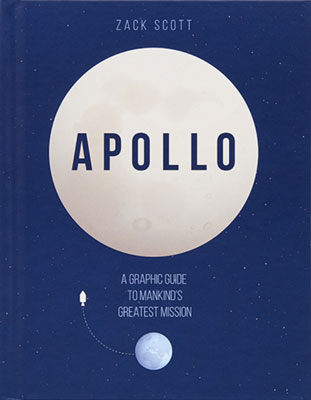
The charts, graphs, tables, maps, and illustrations in this guide display a wide range of facts about the Apollo missions. The first chapter is devoted to facts about the machinery, including the Command Module, the Service Module, the Lunar Module, the Lunar Roving Vehicle, the Saturn V rocket, the A7L space suit and its portable life-support system, the Crawler-Transporter, the Mobile Launcher Platform, and the Vehicle Assembly Building. The second chapter summarizes Apollo 1 to 17, and the third profiles the 12 astronauts who walked on the Moon. The fourth and longest chapter is devoted to statistics, maps, and infographics about a great variety of topics, including the following: the lunar landing sites; Earth splashdown sites; how much each astronaut weighed at launch and on his return; distances traveled by the lunar rover on Apollo 15, 16, and 17; distances traveled by the Command Modules; and a list of all Apollo food rations, with symbols indicating whether they were in their natural state, dehydrated, low in moisture, or thermostabilized.
Back to Top
THE MISSION OF A LIFETIME: Lessons from the Men Who Went to the Moon. Basil Hero. 304 pp. Grand Central Publishing, 2019. $22.
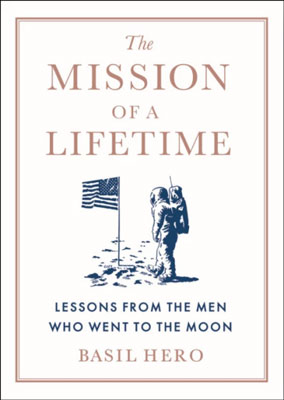
Only 12 of the 24 astronauts who traveled to the Moon are still alive; Hero interviewed these dozen men. The book chronicles their lives and shares with us their wisdom on such topics as overcoming fear, finding gratitude, and practicing humility. The astronauts exhort the reader to commit to the common good, to believe in something greater than oneself, to take care of the planet, and to recognize that humans are all riding the Earth together.
MOONSHOT: What Landing a Man on the Moon Teaches Us about Collaboration, Creativity, and the Mind-Set for Success. Richard Wiseman. 272 pp. Tarcher Perigee, 2019. $26.
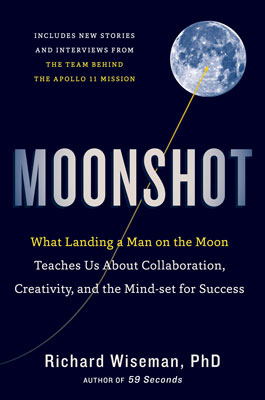
Wiseman, a psychologist, focuses on the team working behind the scenes at NASA to show what the landing teaches us about organization, leadership, teamwork, persistence, creativity, and culture; he interviewed all of the surviving members of the Apollo mission-control team. Each of the book’s eight chapters is devoted to a key lesson. In chapter 1, John F. Kennedy’s 1961 speech serves as an example of the motivational power of following one’s passion and the importance of thinking big and being first. In chapter 2, engineer John Houbolt’s lunar orbit rendezvous plan illustrates the value of questioning conventional thinking and coming up with an innovative way of getting where you want to go. To illustrate the importance of believing in oneself, chapter 3 describes Chris Kraft’s decision to populate Mission Control with young people from modest backgrounds who had worked hard and made their own luck. Chapter 4 uses the tragic Apollo 1 fire to show how one can learn from failure; Wiseman stresses the importance of admitting one’s mistakes and of openly discussing worries and concerns. Chapter 5 emphasizes the importance of taking personal responsibility for getting one’s job done right, and it gives examples of conscientious workers who adopted the mantra that “the project won’t fail because of me.” The lesson of chapter 6 is “feel the fear and do it anyway,” while recognizing that one should not push on when a situation is too risky. Chapter 7 is about the power of preparedness and “defensive pessimism” (considering what might go wrong). Chapter 8, which is about “thriving in the face of the unexpected,” discusses a problem that confronted Armstrong and Aldrin after their Moonwalk: In the Lunar Module, the top had broken off of a switch that was supposed to arm the ascent engine that would lift them from the lunar surface; Aldrin coped with this unexpected situation by improvising a solution.
Back to Top
MOONBOUND: Apollo 11 and the Dream of Spaceflight. Jonathan Fetter-Vorm, with a foreword by Michael Collins. 248 pp. Hill and Wang, 2019. $35 cloth; $19.95 paper.
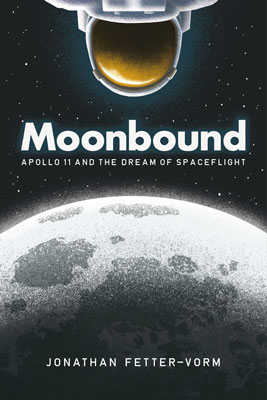
This graphic novel uses shifts in time to tell the full history behind the Moon missions. It opens with an account of the first lunar landing, including the attempt to discover why an alarm sounded during the descent and Armstrong’s concern that fuel might run out before touchdown.
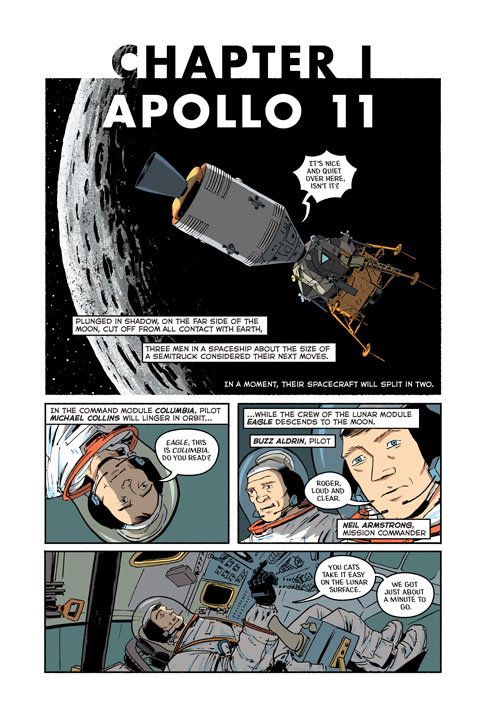
From Moonbound.
A chapter about the origins and history of the Moon follows, and then we return to Armstrong and Aldrin in the Lunar Module, first rehearsing for an emergency getaway and then looking at star maps to try to get their bearings. A chapter on Johannes Kepler follows, and then we join Michael Collins in the Command Module, Columbia. Next up is a chapter on Christopher Wren, Newton, and Jules Verne, and then we’re back on the Eagle with Aldrin and Armstrong. These time shifts are signaled with color; events on the Moon and in the Lunar Module and the Command Module are portrayed in full color, whereas the flashbacks to other eras are in black and white, with additional shading in a single muted color. Additional flashbacks feature Wernher von Braun’s work on rockets in Germany during World War II and his move to the United States immediately after the war; Sputnik and the Russian space race; the recruitment and training of U.S. astronauts; the work of Margaret Hamilton, Katherine Johnson, Mary Jackson, and others in Mission Control; the Apollo 1 fire; construction of the space suits; and simulator training. These are interspersed with glimpses of Armstrong and Aldrin suiting up in the Lunar Module, Collins waiting in the Command Module, and Armstrong and Aldrin exiting the Lunar Module and walking on the Moon as the world watches. Finally we see in full color a much more recent flashback to the events of July 16, as the astronauts board Saturn V, blast off, and travel to the Moon. We stay with them as they explore the Sea of Tranquility, blast off from the Moon, return to Earth, and splash down in the ocean. An epilogue explores the letdown that began soon after Apollo 11 as the public’s attention moved on, and it notes that growing distrust of government fostered claims that the whole thing was a hoax. The book speculates that the future of lunar exploration belongs to private corporations. It closes with a drawing of a full Moon—surrounded by stars and the faces of the people who made Apollo’s successes a reality—and exhorts us to “still see the Moon for what it could be: a beacon on the shore of an impossibly vast and barely charted sea, our closest waypoint in one possible future when we someday sail out among the stars.”
Back to Top
DESTINATION MOON: The Remarkable and Improbable Voyage of Apollo 11. Richard Maurer. 388 pp. Roaring Brook Press, 2019. $19.99.
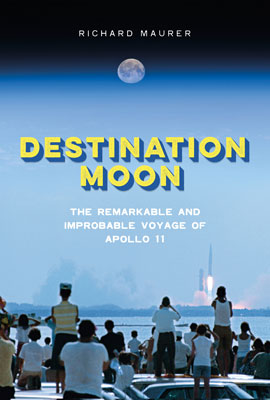
The cover indicates that this engaging book is aimed at readers aged 10–14; however, high school students and adults would also enjoy it and learn a great deal from it, whereas fourth- and fifth-graders would likely find the vocabulary quite challenging. Nearly half of this book is devoted to events leading up to President Kennedy’s 1961 speech announcing that the United States would attempt to land a man on the Moon. Maurer provides a cast of characters that names the following people as key figures: Max Faget, Thomas O. Paine, Donald K. “Deke” Slayton, Samuel C. Phillips, Wernher von Braun, and James E. Webb. All of them went on to play important roles in the Moon effort, but the first 50 pages of the book are devoted to describing what these men did during World War II and showing how those experiences shaped them and taught them “how to do big things quickly.” Once Kennedy gives his speech, events move swiftly. Plans are made to build a Moon rocket, hire D. Brainerd Holmes to oversee the entire effort, double the number of NASA employees, give astronauts spaceflight experience in Projects Mercury and Gemini, conduct programs of robotic exploration, and develop astronavigation. A decision is made to use lunar-orbit rendezvous to get down to the Moon and back up to orbit. Webb fires Holmes and hires George Mueller to replace him, and then Mueller hires Sam Phillips to be his deputy. Additional astronauts are selected and Deke Slayton becomes their squadron commander. Chapters are devoted to the first space rendezvous and docking, the Apollo 1 cockpit fire, the maiden flight of the Saturn V, and Thomas Paine’s appointment to take over after Webb resigns as head of NASA. Thirty pages are devoted to Apollo 7, 8, 9, and 10, and then the Apollo 11 mission is summed up in only 30 pages. The book ends rather abruptly with “one small step for man,” and a brief epilogue explains how “the lunar adventure” ended and what became of the key figures.
GO FOR THE MOON: A Rocket, a Boy, and the First Moon Landing. Chris Gall. 48 pp. Roaring Brook Press, 2019. $19.99.
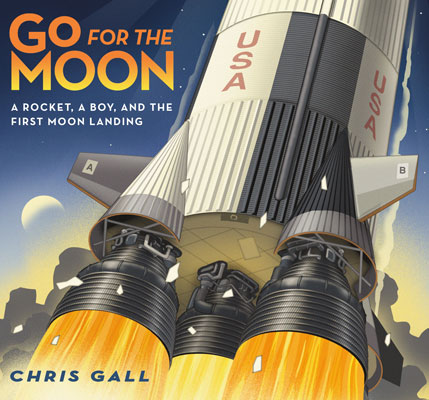
This account is narrated by a small boy who appears in the accompanying drawings to be about 7 years of age but has a vocabulary and understanding of rocketry more likely to be found in a precocious 11-year-old. When we meet him, he is looking up at the Moon through his bedroom window and thinking about the fact that the following day three astronauts will be blasting off for the Moon. We see that in his bedroom he has a child-size space suit, a cardboard “Lunar Module” (big enough for him to crawl inside) held together with tape, a model rocket, a small astronaut doll in a space suit, and a shelf of books about the Moon.

From Go for the Moon.
Over the next few days, as he watches television coverage of the Moon mission with his family, the boy explains in detail what the astronauts are doing and experiencing, and in the margins of that very informative illustrated narrative, we see the boy mirroring the events he is describing: transporting his own small rocket (which uses water as a propellant) to a launchpad in his backyard, putting tiny astronauts into it, going through a Mission Control–style checklist with his brother, moving his Lunar Module into the yard, putting on his own space suit, and defying gravity by leaping around the yard in the moonlight.
FLYING TO THE MOON: An Astronaut’s Story. Revised and Updated Edition for the 50th Anniversary of the Apollo 11 Lunar Landing. Michael Collins, with an introduction by Captain Scott Kelly, former commander of the International Space Station. 208 pp. Farrar Straus Giroux Books for Young Readers, 2019, 1994, 1976. $19.99.
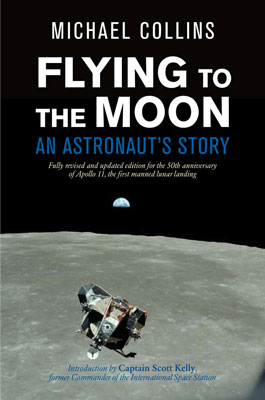
In this very readable account, which is based on his memoir, Carrying the Fire, Collins reminisces about his days as an Air Force test pilot, his training at NASA, and his experiences in orbit; along the way he imparts information about space, the Moon, and things he learned. He describes field trips taken during his NASA training to study geology and to learn how to survive if he ended up in the desert or the jungle on his return to Earth. He describes each of the astronaut’s areas of specialization, explaining that his own specialty was pressure suits and extra-vehicular activity. He talks at length about training for and carrying out an exciting and dangerous “space walk” during the Gemini 10 mission. Shortly after undergoing spinal surgery, Collins worked in Mission Control during Apollo 8’s trip around the Moon, and once he had recovered he was assigned to the Apollo 11 crew. His detailed recollections of his trip to the Moon are fascinating. Then he closes by advocating for an expedition to Mars, or even Alpha Centauri, as he encourages his young readers to recognize that many things that now seem unattainable will become possible during their lifetime.
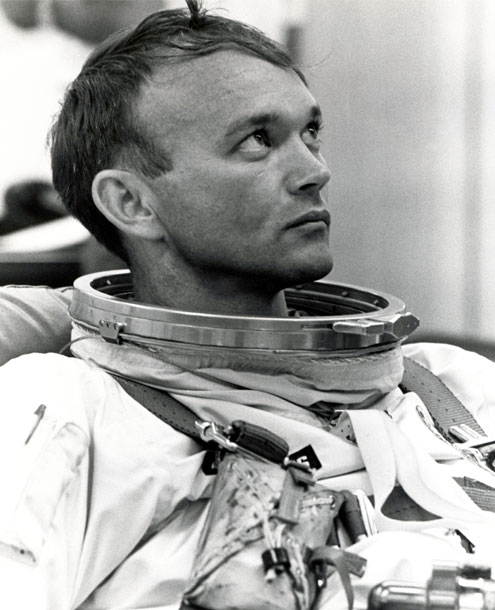
From Flying to the Moon.
Back to Top
American Scientist Comments and Discussion
To discuss our articles or comment on them, please share them and tag American Scientist on social media platforms. Here are links to our profiles on Twitter, Facebook, and LinkedIn.
If we re-share your post, we will moderate comments/discussion following our comments policy.